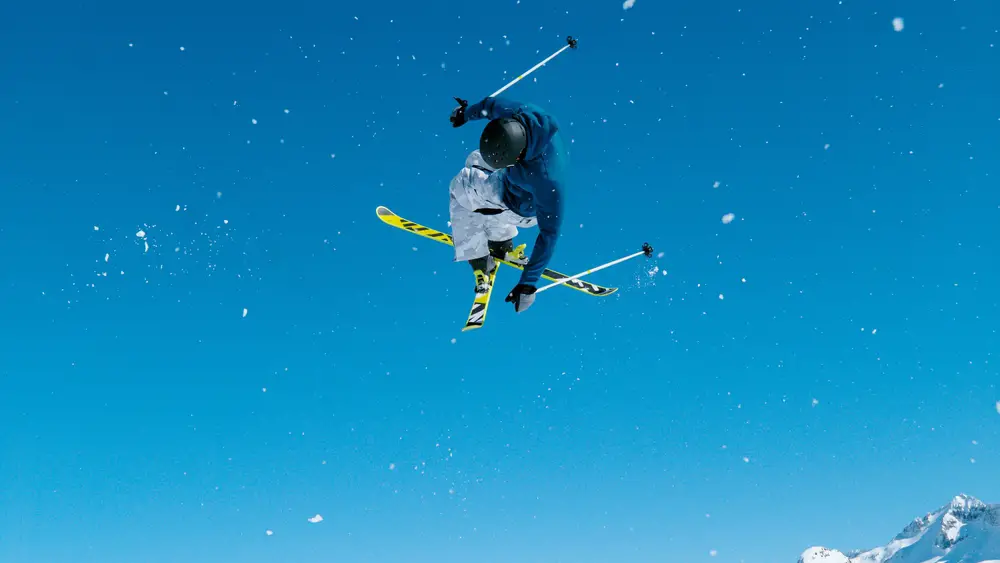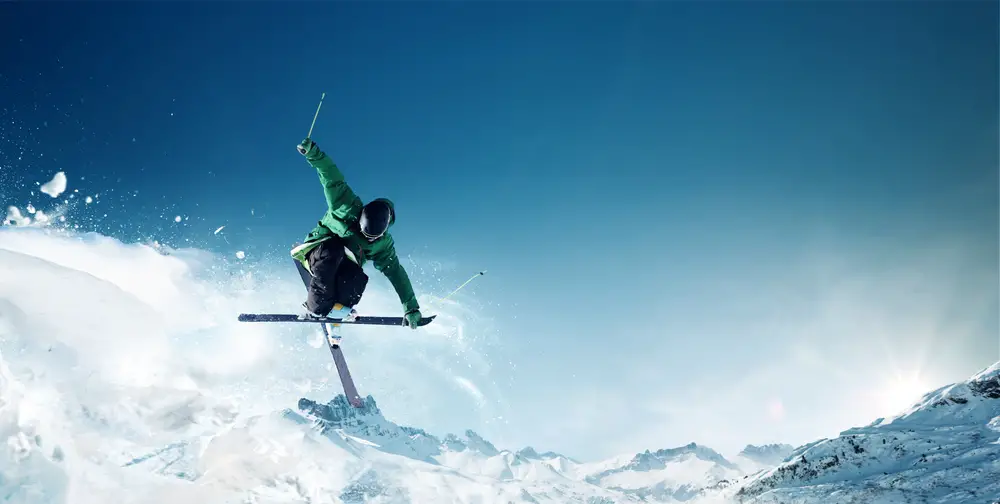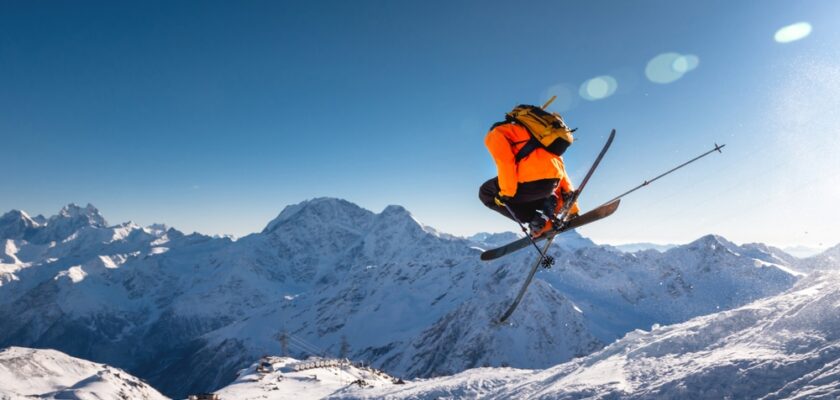Freestyle skiing is a sport that combines technical skill, creativity and a lot of courage on the part of the athletes. The sport has developed rapidly over the years and soon became competitive with well-established rules.
With that in mind, we’ve put together this article on the main rules of freestyle skiing. You’re about to learn more about the structures and dimensions of the competition venue, the duration of the races, the scoring criteria, the number of participants, infractions and penalties, and more!
Get to know the main rules of freestyle skiing!
Open your Betano account and get up to 1,000 reais in bonuses.
Payments via PIX, live games and super odds!
Click here to open your account!

Freestyle skiing rules: complete list
- Slopes;
- Duration;
- Score;
- Participants;
- Infractions and penalties.
Freestyle skiing rules: slopes
Freestyle ski races can take place on different types of slopes, such as moguls, aerials and halfpipe, each with its own requirements. Find out more about each one!
Moguls
Moguls slopes have small snow-covered hills, called moguls or basins. It must be at least 200 meters long and between 18 and 20 meters wide.
The average slope should be around 26 degrees, but can vary between 24 and 30 degrees. The bowls are arranged in a random pattern, with regular intervals that challenge skiers to maintain balance and technique.
Aerials
In aerials, skiers perform acrobatic jumps from specially built ramps. They vary in height from two to four meters, depending on the level of competition and the skill of the athletes.
The landing area must be wide and have a gentle slope to ensure a safe landing, between 34 and 37 degrees.
Halfpipe
The halfpipe has a U-shaped structure with side walls that vary in height from three to seven meters.
The length of the halfpipe should be approximately 100 to 120 meters, and the slope of the side walls should be 16 to 17 degrees.
Freestyle skiing rules: duration
The duration of freestyle ski races varies according to the specific discipline and the competition format.
Here’s how long it is for each discipline!
- Moguls: here, each skier makes two descents, one in the qualifying round and one in the final.
Each run lasts around 25 to 30 seconds, depending on the skier’s speed and style.
- Aerials: in aerials races, skiers have two or three attempts to perform their jumps, with the best score being considered for the final classification.
Each jump lasts a few seconds, but the total time can vary depending on the number of participants.
- Halfpipe: in the halfpipe, skiers have two or three descents to show off their skills.
Each descent can last between 30 and 40 seconds, with skiers trying to perform as many tricks as possible.
Freestyle skiing rules: scoring
Scoring in freestyle skiing is based on different criteria, such as technique, difficulty of the maneuvers, execution and overall style. The judges then evaluate each aspect of the skiers’ performances to determine their final scores.
Here are the three categories evaluated:
Technique
Technique in freestyle skiing refers to the skiers’ precision and control when performing their maneuvers.
In moguls, the ability to maintain a straight and controlled line when going down the slope is checked. In aerials, the precise execution of rotations and flips in the air. In the halfpipe, technique is assessed by the ability to perform complex maneuvers with control.
Difficulty
The difficulty of the maneuvers in freestyle skiing is crucial in the evaluations. More complex and risky maneuvers receive higher scores.
Execution
Execution assesses the perfection with which maneuvers are performed.
Style
Style, as its name suggests, evaluates the skier’s overall style, such as the creativity and originality of the maneuvers. Judges value performances that combine technique and creativity.
Freestyle skiing rules: participants
Freestyle skiing competitions usually involve a large number of participants, who compete in qualifying rounds before advancing to the finals.
During the qualifying rounds, then, all the skiers have the chance to perform their descents or jumps. Several rounds can be held in the races until the finalists are determined.
The best skiers from the qualifying rounds then advance to the finals to compete for the coveted podium. The number of finalists can be between 10 and 20 skiers.
Freestyle skiing rules: infractions and penalties
Freestyle skiing has rules for infractions and penalties. Here are the main ones:
- Safety: skiers are obliged to wear protective equipment such as helmets and back protectors. Failure to comply with these rules may result in disqualification.
- Conduct: in sport, skiers must compete fairly and respectfully. Therefore, unsportsmanlike behavior can result in penalties.
- Technical infractions: improper execution of maneuvers, such as poorly executed landings, falls or failure to complete rotations, result in points being deducted. This ultimately affects the skier’s final score.
- Doping: As in all sports, the use of banned substances is strictly controlled in freestyle skiing. Therefore, skiers who test positive for banned substances face disqualification and possible suspension from future competitions.

Freestyle skiing rules: complete list
- Slopes;
- Duration;
- Score;
- Participants;
- Infractions and penalties.
These are the main rules of freestyle skiing. If you liked this article, be sure to keep exploring the site to stay up to date with the latest news from the world of sport!
And if you’ve made it this far, take the opportunity to leave a comment telling us what you think of the sport’s rules and what other types of content you’d like to read on the site!



